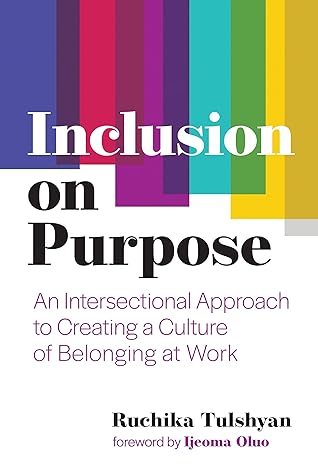More on this book
Community
Kindle Notes & Highlights
Started reading
March 1, 2022
Which
Can
Do
Most
What
“Women of color often hold multiple conversations in our head at once,”
When asked how it felt in the moment, she explains, “What do you do with all of that energy? It literally heats up your body. You know when your computer gets hot from having too many tabs open? I was processing too much information, and it was heating me up.”
“Inclusion initiatives that don’t have sufficient staff or financial resources behind them are harmful because they show that a company to some extent knows that there is an issue, but is unwilling to commit to real solutions that create the changes they say they’re seeking,” she observes.
approach cultivating an inclusion mindset. Be uncomfortable Reflect (on what you don’t know) Invite feedback Defensiveness doesn’t help Grow from your mistakes Expect that change takes time
First, expect and accept that you will be uncomfortable. A growth mindset demands it, as does an inclusion mindset. We must push past feelings of uncertainty, fear, discomfort, and frustration to create equity and justice everywhere, but especially in our workplaces.
If you’re ready to engage, start by asking your direct reports, especially from underestimated backgrounds for honest feedback on your management style.
For managers, I recommend stating transparently to your employee that you’re seeking open and candid feedback on creating a culture of inclusion on the team. Emphasize and ensure that candor will not impact your employee’s advancement or job at the company.
Here are some questions to ask:
I’ll reiterate here that, as many instances in this book outline, women of color are often hypervisible and invisible simultaneously—so we must be careful that leaders do not collect data that would later jeopardize the careers of women of color. I can’t stress this enough; if employees get punished for offering candid feedback, they won’t provide it.
I specifically do not recommend that white people solicit this feedback from women of color friends or have these conversations in social settings. It can create an uncomfortable dynamic that could jeopardize the friendship. And while being able to solicit candid feedback on inclusion is a hallmark of being an effective manager, in social settings it is unfair to expect the other party to take on the labor to educate you. Online and other resources exist specifically for this reason.
Then
Which
Do
What
Who
What


